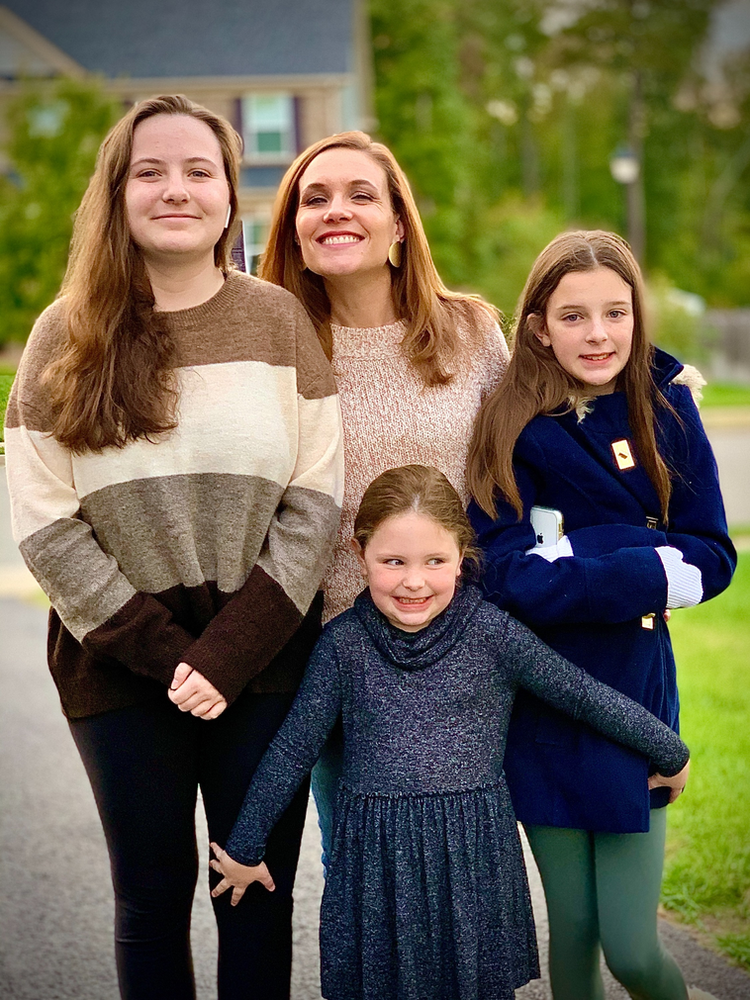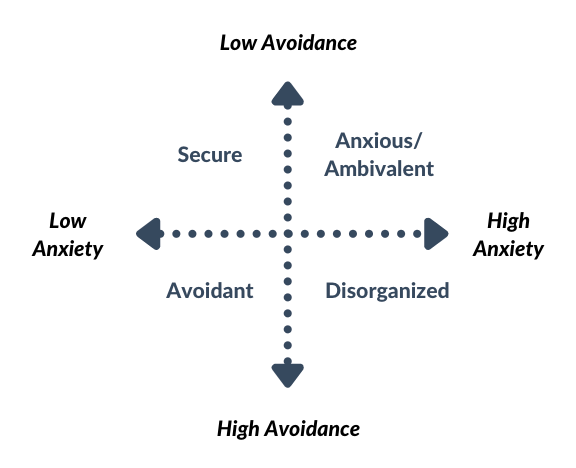Richmond Institute of Sexual Empowerment
August 11, 2021

How do you behave when you’re feeling insecure in your relationship? What steps do you take when you feel a lack of connection? Do your negative reactions surprise you? Do you ever do or say things in the heat of an argument—that don’t make sense to you later on?
You’re not alone.
Relationships are complex. And we learn what to expect and how to get our needs met from our very first relationships with our primary caregivers. Who probably had no idea what they were doing except from watching their own parents. And so on.
When we develop emotional attachments to someone, we’re trusting them to care for our needs and to help us feel safe, secure, and connected.
But what is it that makes us feel that way?
For each individual, the answer is different. But in my practice as a sex therapist, exploring that question often begins with a related one: How do you react when you don’t feel safe, secure, and connected?
And then we get into the theory of adult attachment styles .
What are adult attachment styles?
Our early relationships with our parents teach us how to form and behave in relationships throughout life. The more intimate and vulnerable the relationship, the more amplified are the attachment behaviors. Communication and behavior patterns we learn from our parents are so deeply ingrained in our psyche that we often act them out unconsciously, without considering how they’ll affect our romantic partners.
This can lead to relationship problems and domestic discord. Being unaware of your emotional needs can result in subconsciously focusing solely on your own expectations and drive to fulfill them—sometimes at the cost of your partner’s security, safety, and connection.
Because the basis of sex therapy is communication—with self and others—understanding attachment styles and how they influence your behavior can have a dramatic impact on awareness and empathy.
It’s important to note that experiences after childhood can also impact our adult attachment styles, causing certain characteristics to magnify or diminish. For example, someone who experiences a crisis like sexual trauma or infidelity may develop anxious or avoidant adult attachment behaviors later—even if they grew up with secure childhood attachments.
The reverse is also true. Someone who exhibits toxic relationship habits now can relearn more positive patterns through therapy and intimacy coaching, and learn to develop secure relationship attachments in the future.
Origin of adult attachment theory
In the mid-1900s, a British psychoanalyst named John Bowlby observed the distress behaviors of infants being separated from their parents—and if you’ve ever dropped a child off at daycare you’ll know exactly what that looks like. Clinging to a parent’s leg, crying and screaming, looking around frantically for their primary attachment figure.
Bowlby theorized that such behaviors played a role in evolution. Because human babies cannot feed or care for themselves, those babies who keep close proximity with their caregiver are more likely to survive. So the clinginess, the tantrums, the spiteful running away and hiding—are intended to keep the primary attachment figure close enough to feel safe.
He identified four main aspects of attachment:
-
Proximity maintenance
-
Safe haven
-
Secure base
-
Separation distress
The whole system of attachment behavior is built around one essential question: Is the attachment figure nearby, accessible, and attentive? How the child perceives the answer determines whether they feel secure, loved, and confident.
If yes— they’re more likely to explore and be curious, creative, playful, and sociable.
If no— they experience anxiety and can act out a range of behaviors intended to bring the caregiver back.
Attachment behaviors continue until the child’s attachment figure returns to a comfortable proximity—or is replaced with a secondary attachment surrogate —or after enough time has passed for the child to wear down. In some cases, Bowlby observed, a child can experience deep despair and depression during prolonged separation.
Mary Ainsworth’s “Strange Situation”
Bowlby’s colleague Mary Ainsworth continued the psychological research into attachment and advanced the field considerably. She developed a research method called the Strange Situation Classification to study a child’s reaction to separation:
-
Parent and child are alone in a room.
-
The child explores the room with parental supervision.
-
A stranger enters the room, talks to the parent, and approaches the child.
-
The parent quietly leaves the room.
-
The parent returns and comforts the child.
The revolutionary experiment allowed researchers to study children through many stages of development, in order to gain a better understanding of how attachment styles and behaviors evolve through childhood.
Through her observations Ainsworth and her team identified three major attachment styles:
-
Secure
-
Ambivalent-insecure
-
Avoidant-insecure
Later researchers added a fourth attachment style called Disorganized-insecure , which is much less common and may result from childhood trauma.
The 4 adult attachment styles
The scientists’ child-development research also revealed a connection between childhood relationship attachments and adult romantic partnerships. Which means that any negative attachment behaviors you practiced during childhood may be amplified in your intimate relationships later in life.
This can cause huge problems between couples—which is why sex therapy centers around ongoing communication, empathy, and checking in with yourself and partner(s). Otherwise, you may find yourself in a dangerous behavior cycle. Remember: unspoken expectations are premeditated resentments. And resentment is like plaque in the arteries of a relationship.
Fortunately it’s never too late to stop the cycle and change your path forward. Though deeply ingrained, attachment behaviors are learned. And if they can be learned, they can be unlearned—which isn’t to say it’s easy. Just that it’s possible.
Modern psychologists and relationship therapists evaluate adult attachment styles on a spectrum of low to high, anxiety and avoidance.

Secure Attachment
Most people identify with secure relationship attachments. Securely attached children have parents who tend to play with them more often, attend to their needs consistently, and respond to their emotions and communication.
As children they recovered quickly from separation and greeted a parent’s return with positive expressions. As adults they tend to have lasting, trusting relationships with open communication and empathy.
Anxious/Ambivalent Attachment
People who experience a lot of anxiety about their relationship and the closeness of their attachment figure may be ambivalent about their security, safety, and connection. Meaning they feel doubt; worry about small things; cascade wildly through emotions and ruminating thoughts.
Ambivalently attached children may be less trusting of strangers, less comforted by the return of a parent, more clingy and dependent. As adults, they may feel reluctance and anxiety about getting close with a partner, which can lead to frequent breakups and extreme distress at the end of relationships.
Avoidant Attachment
Infants whose mothers ignored or rejected their needs can form avoidant behavior patterns. These are the kids who run and hide when a parent picks them up from daycare. Or refuse to say goodbye to a friend after a playdate. Sometimes they feel overlooked in favor of a younger sibling.
Avoidant children may not outright reject an attachment figure’s attention, but they likely won’t seek comfort or contact. Instead they seek comfort in aloneness. As adults, they may be emotionally unavailable, struggle with intimacy and closeness, and fail to empathize with and emotionally support their partners through difficult times. They may storm away from difficult conversations. They’re also more likely to engage in casual sex and maintain surface-level relationships.
Disorganized Attachment
The rarest type of attachment style results from inconsistent parental behavior, which can include things like addiction, abuse, and mental health illness.
Children with disorganized attachment may view their parent(s) as a source of both fear and comfort. They may act confused or apprehensive, exhibiting a mix of avoidant and anxious behaviors. Sometimes they take on a caregiver role (as is frequently the case for children of alcoholics).
Adults with disorganized attachment characteristics can learn to manage their behaviors through professional guidance like trauma therapy and/or relationship coaching. They can unlearn negative habits and practice developing safe, secure connections with people.
Relearning attachment behaviors through relationship therapy
Understanding your hangups, attachment behaviors, and the origin of your negative impulses can help solve problems before they get big enough to cause real damage to your relationship. Or help you avoid problems in a future relationship.
Everybody has hangups. And just about everybody carries some form of generational trauma passed down from our parents. But we’re still responsible for our own choices and behaviors. Which means it’s our responsibility to educate ourselves and make choices that reflect our deeper values.
It starts with awareness. Through mindfulness, journaling, and talking with a therapist or other mental health professional, you can learn to recognize negative attachment behaviors and figure out what triggers them.
Becoming aware of your triggers can help you reframe your knee-jerk reactions to your partner, and instead seek clear, calm, open communication about your feelings. What made you feel insecure, unsafe, or disconnected? What emotions do you feel as a result?
Your partner can’t know until you talk about it.
Here’s the thing: knowing about this stuff doesn’t do you or the people you love any good unless you put in the work. Awareness, action, accountability. Sometimes that adds up to a lot.
Relationship therapists and intimacy coaches like me are trained to help with all three. The first step is accepting that you need help. And who doesn’t? This stuff is crazy complex!
Relationships and developmental psychology are mind-bogglingly nuanced. Every experience we have through life teaches us how to react to future experiences. All of our experiences, both positive and negative, are part of who we are, right now.
On top of that, every one of us carries learned behaviors from generations past as well as bad habits from our parents—and most people are completely unaware of how much that can influence our behavior in relationships through adulthood. Thankfully though, unawareness is a temporary condition.
Want to know more about relationship attachments and coaching? Read Attached by Dr. Amir Levine and Rachel Heller—or contact me with any questions you have.



